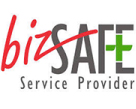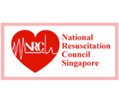SAFETY & HEALTH MANAGEMENT SYSTEMS AUDITS (CONSASS)
As per Regulation 9 of WORKPLACE SAFETY AND HEALTH (SAFETY AND HEALTH MANAGEMENT SYSTEM AND AUDITING) REGULATIONS 2009, it shall be the duty of the occupier of construction worksite to appoint a workplace safety and health auditor to audit the safety and health management system of the workplace at a frequency as specified below.
Any worksite with a contract sum of $30 million or more
At least once every 6 months
The audit methodology includes document review, site inspection and interview of key personnel. The man days required for audits will vary according to audit criteria adopted for different types of workplaces.
The SHMS audit will be conducted in accordance with the relevant WSH legislation and guidelines set out for each industry. The audit will evaluate the SHMS based on the WSH Act and its subsidiary legislation, as well as the following documents:
Construction Safety Audit Scoring System (ConSASS) Requirements
The audit will be conducted by WSH Auditors employed by SAC Accredited Auditing Organization.
The Construction Safety Audit Scoring System (ConSASS) is an audit tool which provides an independent assessment of the safety and health management system at a worksite.
ConSASS provides a profile of the development status and maturity level of each component of a worksite’s safety and health management system. This helps management to better allocate resources in order to elevate standard and improve the effectiveness in managing a worksite’s safety and health risks. As an assessment tool, ConSASS can be used for cross-comparison between worksites in relation to their effectiveness in managing workplace safety and health risks.
AUDIT OBJECTIVES:
- Unified assessment method in term of standardisation of audit checklist and adoption of a common audit scoring system. This would enhance the consistency in the auditing process and allow cross comparison of worksites in terms of the capabilities in managing safety and health risk.
- Mechanism to profile the maturity level for each element of the SHMS in a worksite. With availability of the maturity profile, the management of the worksite could systematically focus its attention to improve the weaker elements in order to elevate the overall maturity of their SHMS to manage safety and health risk.
- Determine whether Project’s WSH Management System, or parts of it, conforms to audit criteria;
- Determine the ability of the Project’s WSH Management System to ensure the organization meets applicable statutory, regulatory and contractual requirements
- Determination of the effectiveness of the WSH Management System to ensure the project can reasonably expect to achieving its specified objectives
- As applicable, identification of areas for potential improvement of the WSH Management System.
AUDIT CRITERIA:
ConSASS Checklist & Guidelines from Ministry of Manpower (MOM) & WSH Council
NORMATIVE REFERENCES:
- WSH Act
- Relevant WSH Subsidiary Legislations
- WSH (Safety & Health Management Systems and Auditing) Regulations 2009
- Fire Safety (Petroleum & Flammable Materials) (Amendment) Regulations 2015
- Relevant Approved Singapore Standards and Codes of Practices
- SAC Terms and Conditions for Auditing Organizations
- Safety & Health Management Systems Manual for above Project
- Safety & Health Procedures for above Project
- ConSASS Audit Checklist Questionnaire
- ConSASS Audit Guidelines from WSH Council
- Appendix 1A Factsheet of ConSASS
- CT 17 SAC Criteria for Accreditation of Auditing Organisations
AUDIT SCOPE:
Audit Scope covers all the work activities at the above project based on current scope of activity at site.
AUDIT METHODOLOGY:
-
Audit Preparation;
-
Conducting the opening meeting;
-
Familiarization Tour of Project Site.
-
Communicating during the audit;
-
Collecting and verifying information;
-
Review of Documents / Records
-
Physical Inspection of Project Site
-
Interview of Key Personnel
-
Generating audit findings;
-
Preparing audit conclusions;
-
Conducting the closing meeting;
-
Preparation and Submission of Audit report
ROLES & RESPONSIBILITIES OF AUDIT TEAM:
Lead Auditor:
- Lead the audit team.
- Conduct opening meeting covering all relevant items as per auditing standard.
- Review the results of previous audits, if any.
- Ensure that audits are carried out according to requirements stipulated by Regulatory Authorities.
- Assign the tasks to audit team.
- Keep the client informed of audit progress.
- Reassign work as needed between the audit team members and periodically communicate the progress of the audit and any concerns to the client
- Where the available audit evidence indicates that the audit objectives are unattainable or suggests the presence of an immediate and significant risk (e.g. Safety), the audit team leader shall report this to the client.
- Review with the client any need for changes to the audit scope that becomes apparent as on-site auditing activities progress.
- Attempt to resolve any diverging opinions between the audit team and the client concerning audit evidence or findings, and record unresolved points.
- Review audit findings with his team.
- Conduct closing meeting covering all relevant items as per auditing standard.
- Present audit conclusions during closing meeting.
- Consolidate the audit report and send to August International Pte Ltd
Co-Auditor:
- Conduct audits according to requirements from Regulatory Authorities.
- Carry out audits as per audit itinerary.
- Discuss audit findings with lead auditor prior to closing meeting.
- Follow the directions given by lead auditor.
- Assist the lead auditor in presenting findings on clauses / elements audited by him during closing meeting.
- Prepare and submit to lead auditor with report on clauses / elements audited by him.
Auditee(s) / Guide:
- Establishing contacts and timing for interviews;
- Arranging visits to specific parts of the site or organization;
- Ensuring that rules concerning site safety and security procedures are known and respected by the audit team members;
- Witnessing the audit on behalf of the client;
- Providing clarification or information as requested by an auditor.
Technical Experts:
Technical Experts will be deployed as necessary for audits.
Testimony of Audit Conducted:
A testimony will be issued to the audited organization stating the company name, location, audit criteria, audit date and auditing organization name.
Processes for handling requests for information and complaints:
If audited client has any request for information and complaints, he can email to admin@rcert.com.sg stating clearly client name, identity & contact details of person making the request and details of complaints.





